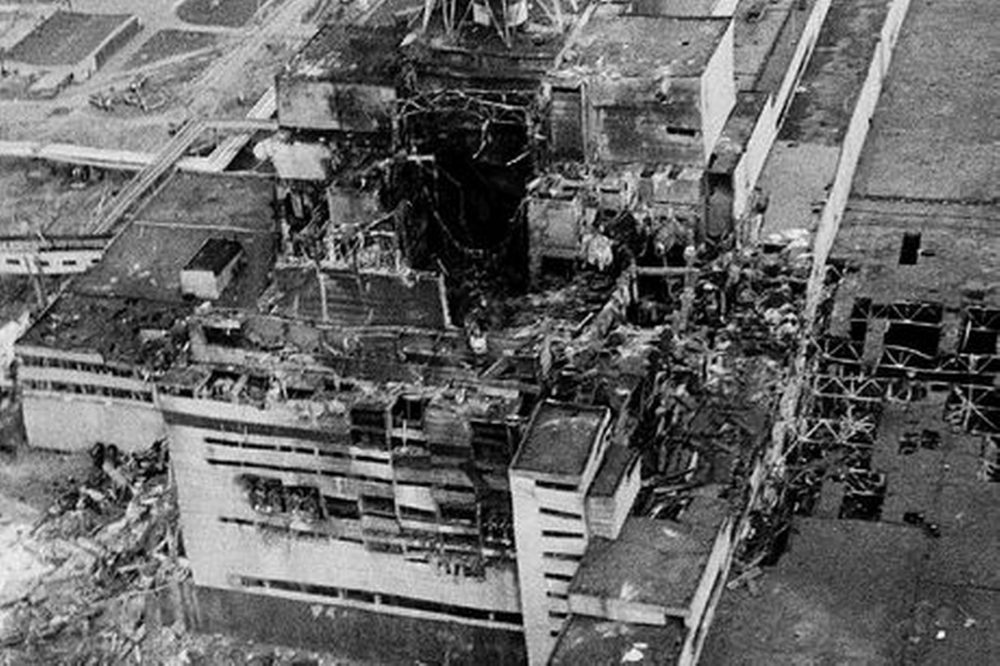The U3A meeting presented a slide talk about the Chernobyl disaster on Monday, February 19 . The chair of the U3A had visited recently and gave a comprehensive picture of what happened in the immediate aftermath and the resulting developments 30 years on. While the area can now be visited under guidance, no-one is allowed to enter the empty houses because they have been derelict since the evacuations several days after the explosions, nor are they allowed to sit down anywhere. The villagers at the time were only allowed to take one bag and some food and they had to leave their animals behind. The interesting fact here is that 30 years on, because the area was unpopulated for so many years, nature has taken over again, covering the houses and streets with trees and green pastures. Wild horses, boars, foxes, dogs roam at will and the bird population has increased. Nature has reclaimed the land adjusting to the still contaminated earth.
To set it in context, Barys Piatrovich, a Belarusian writer and journalist who was there and remembers the day and evening of April 26, 1986, in the town of Homel recounts : “I remember I was unable to do anything because of the silent scream, it seemed to me, filling all the space around me.” He wrote this in 2011, 25 years after the disaster and recalls the tension of the unknown that gripped him and those around him in the days that followed April 26.
Few people knew what had happened exactly, but Piatrovich remembers that for several days “the air was dry, the wind blew hot and strong. In places the ground was bare and hard like asphalt, all the sand had been blown away from the town, no rain came. There was a tension like a bowstring.” It was only much later he realised whatever the direction that the wind was blowing in “it brought misfortune to our small planet earth and the first place it brought that misfortune to was my Belarus.” He remembers that very little information was given out particularly concerning the danger of radiation and the fact that there had been an explosion in one of the reactors,which eventually caught fire. Radiation contamination had spread across Ukraine and countries adjacent to the USSR.
Today, with the internet and digital opportunities information would have been across the world immediately, but in those days news and papers were totally controlled by the government. It was only on May 4 that government evacuations of all the villages closest to Chernobyl, less than 10km from the disaster, were started . Many people were rehoused in Belarus, few of whom are still alive. To stop people panicking, the government put on lots of celebrations of special events like May Day, Orthodox Easter Sunday and May 9 Victory Day. Piatrovich felt that Gorbachev and his team managed to get the situation just about under control, keeping everyone, as much as possible, in the dark about the actual radiation danger, including the West.
Due to the fire fighters who succeeded in putting out the fire and the soldiers who built a sarcophagus around the damaged reactor, the threat of the second reactor was lifted. Official figures collected show that Chernobyl affected 23% of the territory of Belarus, i.e. some 47,000 square kilometres, 3,678 villages and towns and 2,500,000 people. Note from Barys Piatrovich: “We didn’t understand what the tragic consequences would be. Radiation is a terrible thing, it doesn’t burn , doesn’t sting – it kills silently without a mark. Amnesia is also a terrible thing – it also kills silently.,
The details above are taken from an article published by Barys Piatrovich and www.opendemocracy.net under a Creative Commons licence.
Photo: library image



